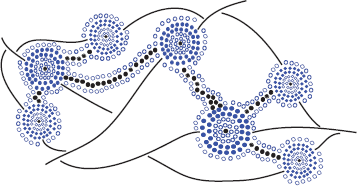Chapter 3. Arrays, Linked Lists, and Recursion

Contents
3.1 Using Arrays | 104 |
|
|
3.1.2 Sorting an Array | 109 |
3.1.3 Two-Dimensional Arrays and Positional Games | 111 |
3.2 Singly Linked Lists | 117 |
3.2.1 Implementing a Singly Linked List | 117 |
3.2.2 Insertion to the Front of a Singly Linked List | 119 |
3.2.3 Removal from the Front of a Singly Linked List | 119 |
3.2.4 Implementing a Generic Singly Linked List | 121 |
3.3 Doubly Linked Lists | 123 |
3.3.1 Insertion into a Doubly Linked List | 123 |
3.3.2 Removal from a Doubly Linked List | 124 |
3.3.3 A C++ Implementation | 125 |
3.4 Circularly Linked Lists and List Reversal | 129 |
3.4.1 Circularly Linked Lists | 129 |
3.4.2 Reversing a Linked List | 133 |
3.5 Recursion | 134 |
3.5.1 Linear Recursion | 140 |
3.5.2 Binary Recursion | 144 |
3.5.3 Multiple Recursion | 147 |
3.6 Exercises | 149 |
Using Arrays
In this section, we explore a few applications of arrays—the concrete data structures introduced in Section 1.1.3 that access their entries using integer indices.
Storing Game Entries in an Array
The first application we study is for storing entries in an array; in particular, high score entries for a video game. Storing objects in arrays is a common use for arrays, and we could just as easily have chosen to store records for patients in a hospital or the names of players on a football team. Nevertheless, let us focus on storing high score entries, which is a simple application that is already rich enough ...
Get Data Structures and Algorithms in C++, Second Edition now with the O’Reilly learning platform.
O’Reilly members experience books, live events, courses curated by job role, and more from O’Reilly and nearly 200 top publishers.

